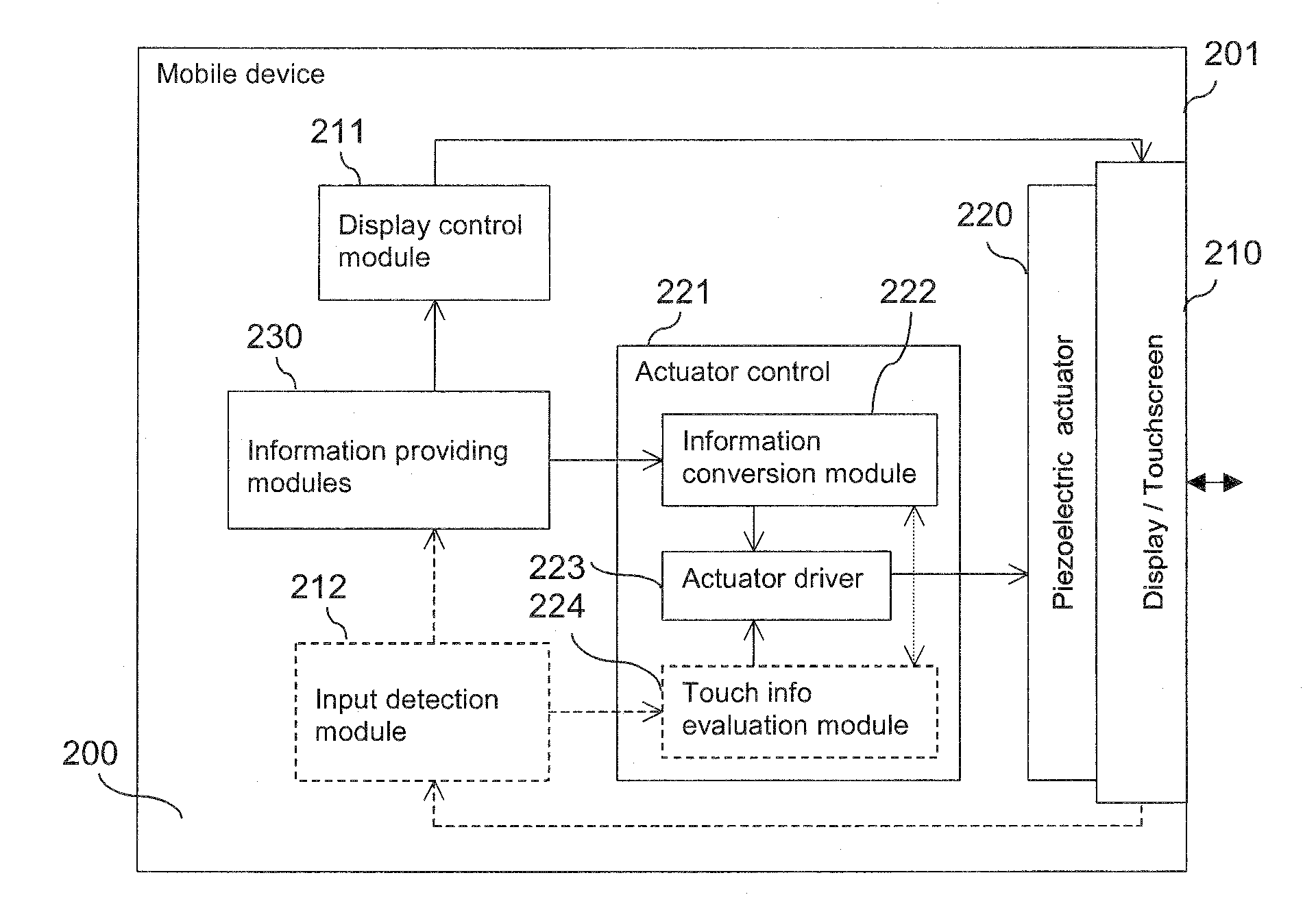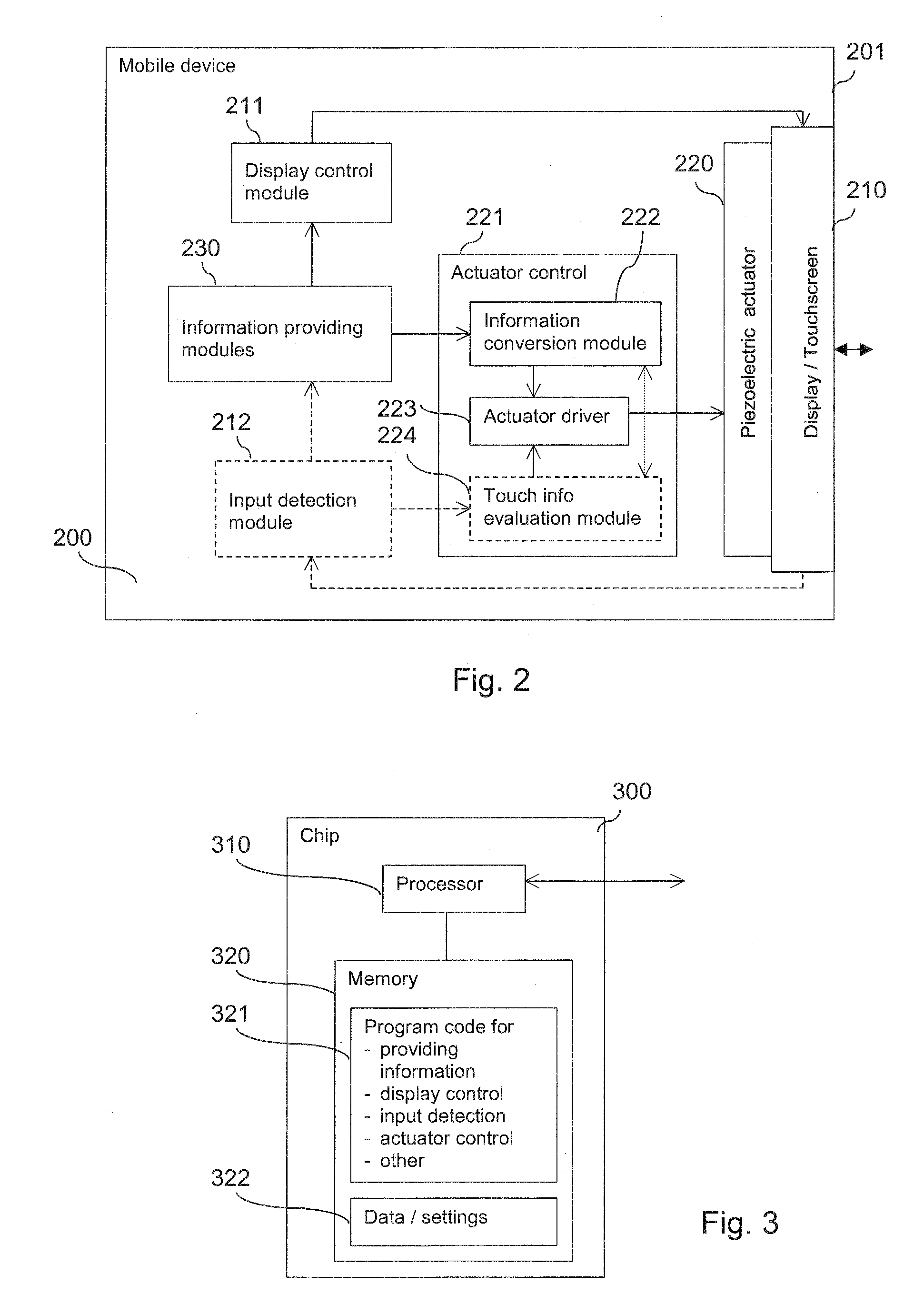Tactile feedback
a technology of tactile feedback and feedback loop, applied in the field of tactile feedback, can solve the problems of inability the visual impairment is faced with many challenges, and the screen reader is not always able to interpret all information that should be synthesized to speech, etc., and achieves low cost and acceptable display and device size. , the effect of low cos
- Summary
- Abstract
- Description
- Claims
- Application Information
AI Technical Summary
Benefits of technology
Problems solved by technology
Method used
Image
Examples
Embodiment Construction
[0008]A method is described, which comprises converting at least one of textual information and graphical information into instructions for a sequence of pulses representing the information. The method further comprises causing an actuator to move a display according to the obtained instructions.
[0009]Moreover, a first apparatus is described, which comprises a processor. The processor is configured to convert at least one of textual information and graphical information into instructions for a sequence of pulses representing the information. The processor is further configured to cause an actuator to move a display according to the obtained instructions.
[0010]The apparatus may comprise for example exclusively the described processor, but it may also comprise additional components. The apparatus could further be for example a module provided for integration into a device, like a processing component, a chip or a circuit implementing the processor, or it could be such a device itself....
PUM
 Login to View More
Login to View More Abstract
Description
Claims
Application Information
 Login to View More
Login to View More - R&D
- Intellectual Property
- Life Sciences
- Materials
- Tech Scout
- Unparalleled Data Quality
- Higher Quality Content
- 60% Fewer Hallucinations
Browse by: Latest US Patents, China's latest patents, Technical Efficacy Thesaurus, Application Domain, Technology Topic, Popular Technical Reports.
© 2025 PatSnap. All rights reserved.Legal|Privacy policy|Modern Slavery Act Transparency Statement|Sitemap|About US| Contact US: help@patsnap.com



